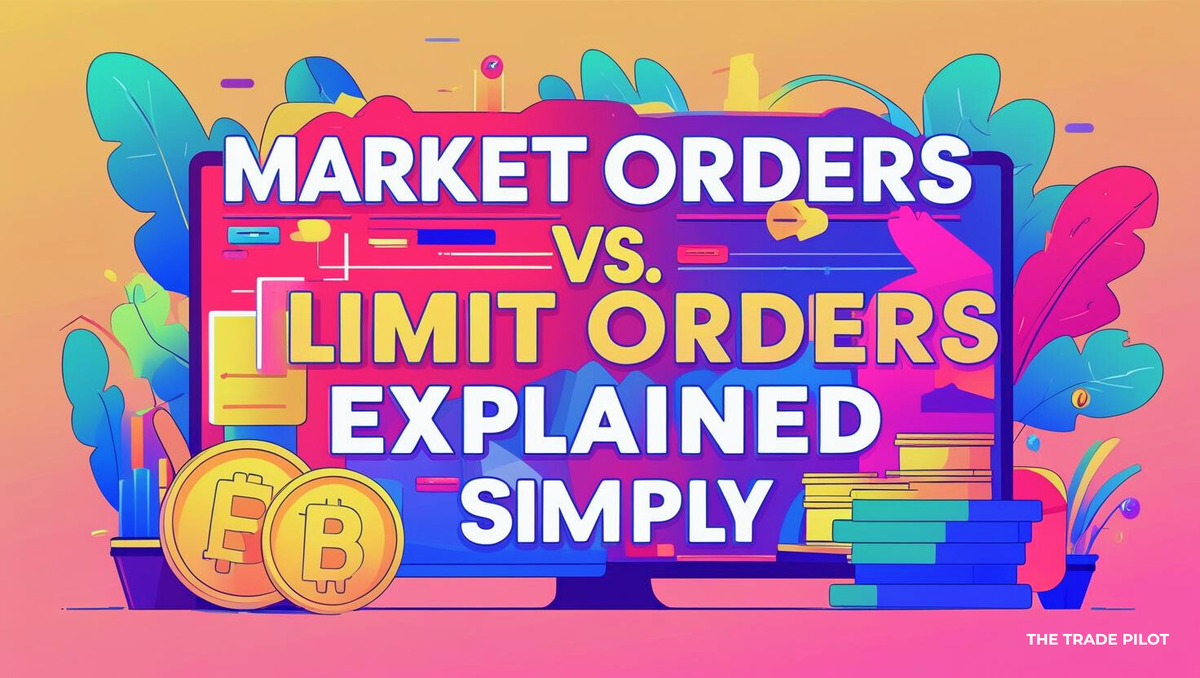Fast or precise? That’s the decision every beginner trader faces when placing their first crypto trade. Do you want your order filled instantly, or are you willing to wait for the exact price you want? The two main tools for this decision are market orders and limit orders. While they sound simple, these order types define how you interact with the market and can have a big impact on your results. In this guide, we’ll break down how both work, their pros and cons, and when you should use each.
What Is a Market Order?
A market order is the most straightforward way to buy or sell crypto. You’re telling the exchange: “Fill this order immediately at the best available price.”
Market orders focus on speed, but that speed comes at a cost.
- Speed: Your trade is executed right away. This is useful in volatile conditions when prices change within seconds.
- Price Uncertainty: You don’t set the price—you take what’s available. This can lead to slippage, where the executed price is higher or lower than what you expected.
- Liquidity Concerns: In thinly traded coins, a large market order can “eat through” the order book, pushing the price up or down as it fills.
Example: Imagine Bitcoin is trading near $100,000 and you want to instantly buy $1,000 worth. You place a market order, and the exchange matches you with sellers until your order is fully filled. You get your Bitcoin in seconds, though the exact execution price may vary slightly.
When to Use Market Orders: Market orders are best when speed matters more than price precision. If Bitcoin suddenly starts crashing and you need to exit immediately, a market order ensures you’re out instantly—even if the price isn’t ideal.
What Is a Limit Order?
A limit order allows you to set the exact price at which you’re willing to buy or sell. Instead of saying “get me in now,” you’re saying “only fill my order if the market reaches this level.”
This gives you precision, but the tradeoff is uncertainty about execution.
- Control: You set the exact price you want.
- Risk of No Fill: If the market never reaches your chosen price, your order remains unfilled.
- Strategic Flexibility: Limit orders are useful for buying dips, selling into rallies, or building positions without staring at charts all day.
Example: Bitcoin trades at $100,000, but you only want to buy if it drops to $95,000. You place a limit order at $95,000. If the price dips, your order executes automatically. If it doesn’t, your order stays open until canceled.
When to Use Limit Orders: Limit orders are best when you’re patient and value precision. They’re commonly used for planned entries and exits, letting you automate trades without reacting to every price move.
Market Orders vs. Limit Orders: Choosing the Right Tool
The choice between market and limit orders depends on your priorities. If you need fast execution—like getting out of a losing position—market orders are best. If you care about precision—like waiting for a dip to buy—limit orders are better. Many traders combine both, setting limit orders for planned trades while keeping market orders ready for urgent situations.
Common Mistakes Beginners Make
- Overusing Market Orders: Constantly buying or selling with market orders in volatile or illiquid coins often results in poor prices, and small losses add up over time.
- Unrealistic Limit Orders: Placing buy orders far below market price or sell orders far above often means they’ll never be filled, leaving you missing real opportunities.
- Forgetting Fees: Some exchanges charge higher fees for market orders (taker) than for limit orders (maker). Over time, this can reduce profits.
Understanding these pitfalls is crucial for protecting your trading capital.
Final Thoughts
Market and limit orders may seem basic, but they are the foundation of all trading strategies. Market orders give you speed, while limit orders provide control. Knowing when to use each is essential for trading manually or with bots like The Trade Pilot. Bots still rely on the same mechanics, and understanding order types ensures you configure strategies correctly.
If you’re aiming to grow as a trader, mastering order types is one of the best first steps. Get this right, and you’ll trade with more confidence and set yourself up for more advanced strategies.

